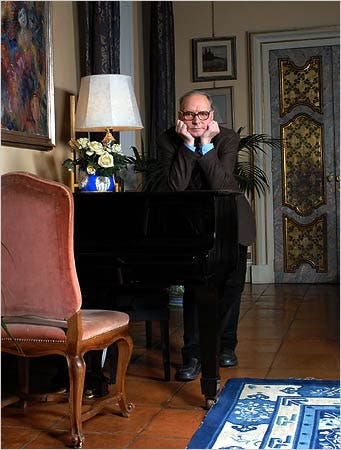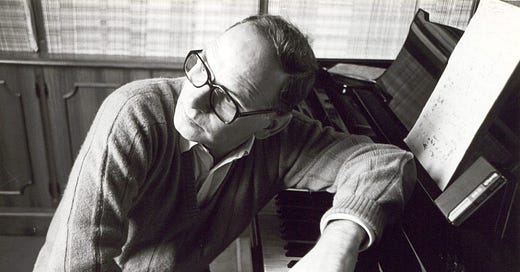Welcome to the latest issue of Subtle Maneuvers. Previously, we looked at Eileen Myles’s “workshop with solitude.”
Ennio Morricone (1928–2020)
Following the news of Morricone’s death, at age 91, last week, I spent some time looking into the legendary Italian composer’s creative process, which he described (reluctantly, you get the sense) in bits and pieces over the years. By all accounts, Morricone presented a reserved, businesslike persona to the world, dressing like an economics professor and working diligently in his palazzo in Rome to produce scores for as many as 20 films a year (!). Forever associated with his whipcrack- and ocarina-laden soundtrack for Sergio Leone’s 1960s Man with No Name trilogy, Leone was—as John Zorn argued in the New York Times last week—much more than the Maestro of spaghetti westerns. He certainly held himself to a higher standard. “The notion that I am a composer who writes a lot of things is true on one hand and not true on the other,” he told the Times’s Jon Pareles in 2007. “Maybe my time is better organized than many other people’s. But compared to classical composers like Bach, Frescobaldi, Palestrina or Mozart, I would define myself as unemployed.”

In 2016, Morricone described his typical composing process to the Independent:
When I have to score a film, I watch the movie first and then start thinking about it. And from that moment on, it is as if I were pregnant. I then have to deliver the child, so from that moment on, I think always about the music—even when I go to the grocery store, I think about it.
In the book Ennio Morricone: In His Own Words, he added a bit more about how this works:



